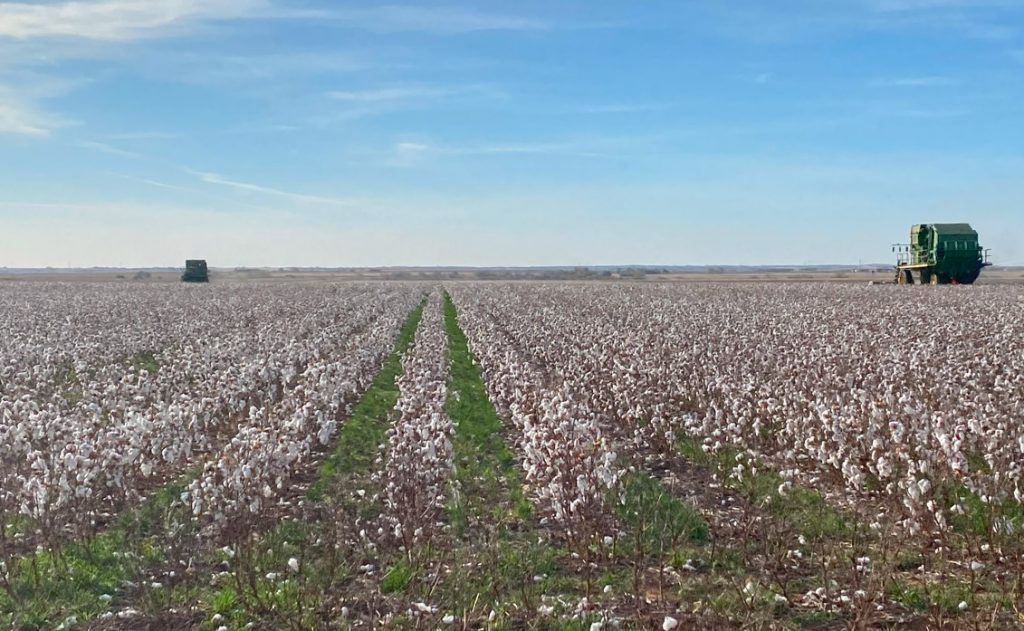
In April, four national wildlife refuges — including Muleshoe — received support from the federal government to expand their acreage. The original boundary set by the government limited potential growth, so the U.S. Department of Interiors lifted the boundary limitations.
However, there is no eminent domain process involved. It is all freedom of choice as to whether someone wants to sell their land to the refuge.
“Some of my best friends are cotton farmers,” said Jude Smith, manager of the Muleshoe National Wildlife Refuge and overseer of the expansion project. “We’re just looking to expand our conservation endeavors for wildlife and wetlands, but we’re not taking it by force.”
He went on to say some of the information being distributed by the American Stewards of Liberty group is a little misleading. The nonprofit champions private property rights and has dedicated a page of their website to what they call the “Muleshoe Land Grab.”
While the new plan allows the refuge to expand up to 700,000 acres in the Southern High Plains of West Texas and Eastern New Mexico, it doesn’t mean that the land will automatically be given to them or taken by force from the landowner. The plan will take decades to reach the goal set, according to Smith, and “will hopefully provide a flexible plan into the future for everyone involved.”
“Yes, it’s voluntary,” said Margaret Byfield, executive director of the American Standards of Liberty. “However, we are concerned that land will be taken under federal control through conservation easements or regulatory pressure from the government.
They create the problem for landowners by regulating practices through the Endangered Species Act, and then they come in with the solution: we’ll buy your land and then you won’t have to worry about it.”
Byfield goes on to say that conservation easements can potentially yield all control to the government as well. If entering a conservation easement contract, it’s important to read the fine print, and, according to Jay Bragg, associate director of Commodity and Regulatory Activities for Texas Farm Bureau, consult with your attorney, family and heirs. “This is a big decision,” agreed Smith. “No one should ever feel rushed to enter into an agreement.”
However, if landowners pay careful attention to their contracts should they desire to enter into one, they still retain ownership of the property even if they sell their development right through a conservation easement.
Byfield claims this plan was enacted to achieve the goals of the Biden Administration’s “America the Beautiful” initiative — also known as the 30×30 vision within Biden’s climate crisis executive order issued shortly after he took office in 2020. The 30×30 vision aims for the U.S. to conserve at least 30% of U.S. lands and freshwater and 30% of U.S. ocean areas by 2030.
“It’s all about government control, which will decimate local economies by taking land out of production and out of local County tax revenue,” Byfield added.
Smith emphasized the choice behind this plan. “It’s just an option for landowners who have been asking for this for more than a decade. They don’t have to sell, and we won’t take the land from them.”
PCG Key takeaways from visiting with both the American Stewards of Liberty and the Muleshoe National Wildlife Refuge:
- Read all the fine print from both sides.
- Talk to both parties before coming to an opinion.
- Calling this plan a land grab is inaccurate.
- There isn’t a “removal of acreage” — it’s an optional transaction should someone wish to sell or contract a conservation easement.
- If you “cross your t’s and dot your i’s” on the conservation easement contractual agreement, then you retain ownership rights of property.
- When evaluating land sales to the refuge or conservation easement, consult an attorney.
Eminent domain is not involved in this process. - This is not a federal mandate.
















